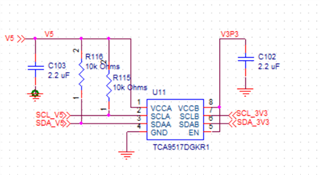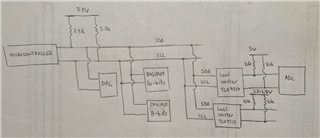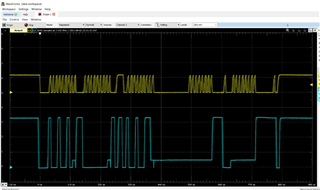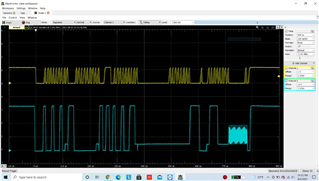Hi there,
I am currently working with a TCA9517DGKRQ1 (TCA9517DGKRQ1 Texas Instruments | Integrated Circuits (ICs) | DigiKey) part and I have VCCB and VCCA set to 3.3 V and 5 V, respectively. The VCCB SDA/SCL lines are connected to the microcontroller I2C lines and the VCCA SDA/SCL lines are connected to some ADCs.
Now, when I tried acquiring some data from the ADCs via I2C, nothing happens. I have probed the VCCB SDA/SCL lines (pulled to 3.3 V via a resistor) and I do see the I2C clock and data signals; however, when I probe the VCCA SDA/SCL lines (pulled to 5 V via a resistor) and I do NOT see the clock and data signals. Can you help me understand why? Based on what I'm observing, it seems that VCCA supply cannot be greater and VCCB supply even though the datasheet does not confirm that. Can you please provide an insight on this?
For reference, the below information tells you how everything is connected on my board
VCCA (pin 1) = 5 V, decoupling capacitor = 2.2 uF
SCLA (pin 2) = Pulled up to 5 V via 10 kOhms
SDAA (pin 3) = Pulled up to 5 V via 10 kOhms
GND (pin 4) = ground
EN (pin 5) = Shorted to 3.3 V
SDAB (pin 6) = Pulled up to 3.3 V via 3.3 kOhms
SCLA (pin 7) = Pulled up to 3.3 V via 3.3 kOhms
VCCB (pin 8) = 3.3 V, decoupling capacitor = 2.2 uF
Thanks,
Alex







